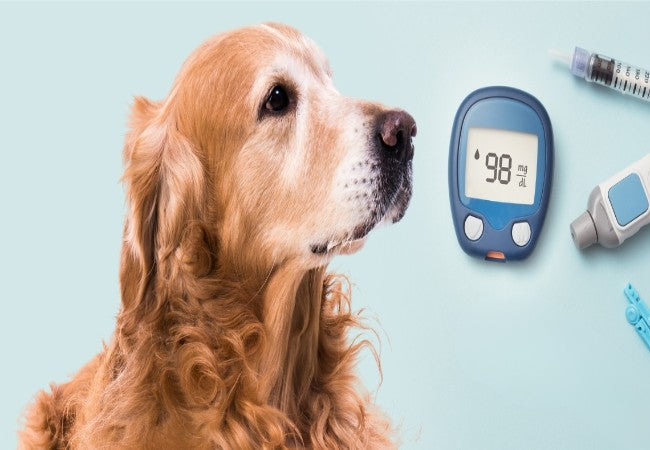Vet Guide to Hyperosmolar Coma in Diabetic Dogs 2025 🐶🩺

In this article
Vet Guide to Hyperosmolar Coma in Diabetic Dogs 2025 🐶🩺
By Dr. Duncan Houston BVSc
Hyperosmolar coma (also called hyperosmolar hyperglycemic state, HHS) is a rare but life-threatening complication of canine diabetes mellitus. It develops when extremely high blood glucose (>600 mg/dL) causes severe dehydration and elevated serum osmolality (>320 mOsm/kg), leading to CNS disturbances: confusion, seizures, stupor, or coma.
📍 Causes & Risk Factors
- Occurs in long-standing or poorly controlled diabetic dogs, especially when dehydration is prolonged. Triggers include infection, stress, and concurrent illnesses such as pancreatitis or UTI.
- Unlike DKA, ketone production is minimal or absent; hyperglycemia is severe (>600 mg/dL) and hyperosmolality >320–350 mOsm/kg.
👀 Clinical Signs
- Severe polydipsia and polyuria fail to prevent dehydration and weakness; CNS signs include depression, confusion, seizures, and coma.
- Physical exam reveals extreme dehydration and altered mentation or unresponsiveness.
🔬 Diagnosis
- Bloodwork: Serum glucose >600 mg/dL, osmolality >320 mOsm/kg, minimal ketonemia.
- Urinalysis: Glucosuria present, ketones absent or very low—a key distinction from DKA.
- CNS assessment: Neurologic signs, seizures, or coma necessitate hospitalization.
💊 Treatment & Management
- Slow IV fluid therapy: Begin isotonic saline to correct dehydration gradually—especially during first 4–6 h—to minimize cerebral swelling.
- Low-dose insulin: Initiated after rehydration starts to gently lower glucose without dramatic shifts.
- Electrolyte support: Monitor and replace potassium, sodium, and other electrolytes as fluids shift.
- Treat underlying causes: Identify and treat co‑morbidities (infections, pancreatitis) to prevent recurrence.
- Neurologic care: Manage seizures, mentation changes, and monitor for CNS complications.
📈 Prognosis & Monitoring
- Guarded prognosis; mortality can reach ~50% in humans. Early, careful fluid and glycemic control improve survival.
- Frequent re-evaluation of hydration, glucose, electrolytes, and neurologic function is essential.
- Post-crisis, tight diabetic control and diligent monitoring are critical to avoid recurrence.
✅ Dr Houston’s Clinical Tips
- 🔍 Watch for PU/PD in diabetics—don’t ignore excessive thirst or weakness.
- 📊 Check serum osmolality if dogs present with confusion or severe dehydration.
- 🚰 Begin fluids before insulin to avoid rapid osmotic shifts.
- 📅 Monitor electrolytes diligently during fluid therapy.
- 🛑 Control triggering infections or diseases to prevent hyperosmolar episodes.
If your diabetic dog becomes lethargic, disoriented, has seizures, or isn’t drinking despite PU/PD, seek emergency care immediately. With timely treatment, we can guide recovery and refine long-term diabetes plans to protect your pet’s health and happiness. 🐾❤️






